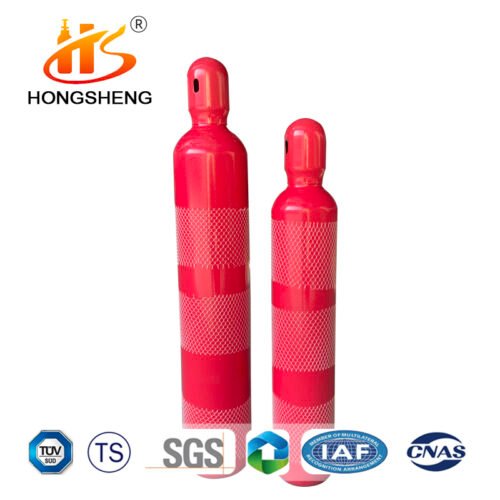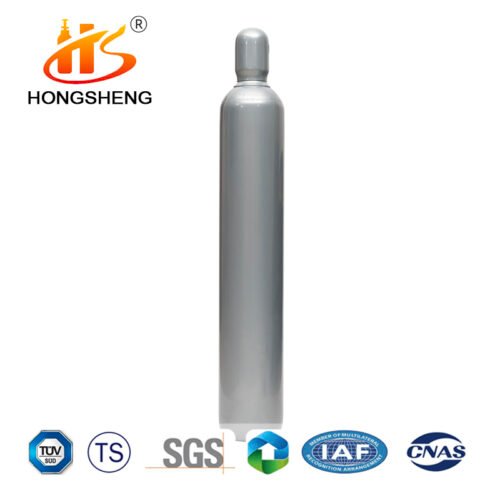Large Portable Oxygen And Acetylene Tanks With CGA300 Vavle

Acetylene cylinder
Porous monolithic calcium silicate packing dissolved acetylene cylinder, widely used in cutting, welding, lighting, chemistry, analysis, military engineering and other industries, has the advantages of safety and reliability, energy saving, easy to use, reduce pollution and so on.
Our products are welded with high quality low alloy steel plate and filled with porous calcium silicate filler in the cylinder.
Unique product technology, quality control is strictly prohibited. It has the advantages of high porosity and large aeration.

The dissolved acetylene cylinders manufactured by our company are of stable quality, economic safety and well received by the majority of users.
Main technical indicators:
1, packing porosity: 90-92%;
2, packing compressive strength: ≥ 1.8mpa;
3, fusible alloy operating temperature: 100±5℃
4, packing standard: GB11638-2011
Why should oxygen and acetylene bottles be stored separately?
Acetylene is flammable and oxygen is combustive. If acetylene leaks, acetylene mixes with air and explodes violently when it meets a spark or an open flame. The explosion destroys the oxygen cylinder and releases oxygen. In this way, the combustivenicity of oxygen makes the explosion more violent. Out of control. So the two of them can’t be together.
Oxygen Cylinder
Why can’t oxygen bottles, especially the mouth, be contaminated with or come into contact with grease?
1. Because fats, especially unsaturated fats and acids, are easily vaporized and exothermically. Oil yarn head, oilcloth so spontaneous combustion is due to oxidation in the air, gather heat is not scattered, when the point of spontaneous combustion and cause spontaneous combustion.
2, because pure oxygen has a strong oxidation, it can promote the violent combustion of combustible. Oil meets pure oxygen and its gasification speed is greatly accelerated. And it gives off a lot of heat. A rapid rise in temperature will soon cause combustion. If the mouth of the oxygen bottle is stained with oil, when the oxygen spews out rapidly, the oil rapidly oxidizes, and the heat generated by the friction between the high pressure airflow and the mouth of the bottle further accelerates the oxidation reaction, so the oil contaminated on the oxygen cylinder or pressure reducing valve will cause combustion or even explosion. This is why oxygen cylinders, especially their mouths and accessories in contact with oxygen, are strictly forbidden to contact with grease.

| Trade name | Type | Outside Diameter
(mm) |
Water Capacity
(L) |
Working pressure
(Bar) |
Design wall thickness
(mm) |
Materia
Grades |
| oxygen cylinder | 40.0L | 219 | 40.0 | 150 | 5.7 | 37MN |
| acetylene cylinder | 40.0L | 250 | 40.0 | 5.2Mpa | 3.3 | HP295 |
























